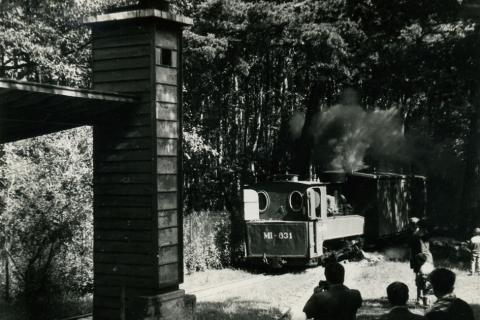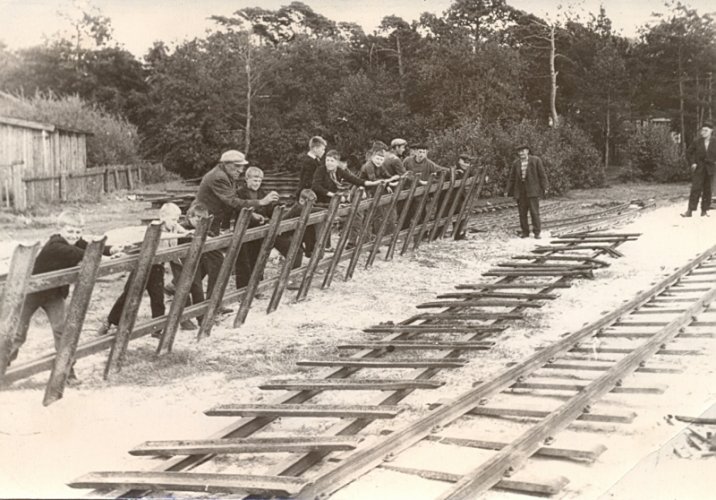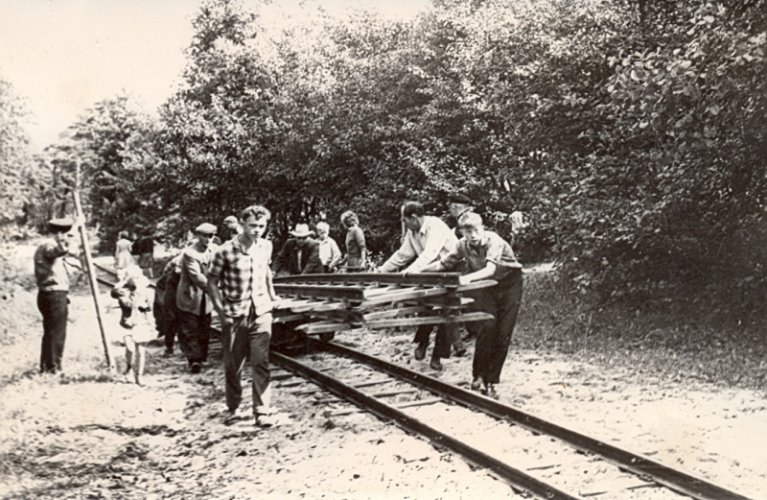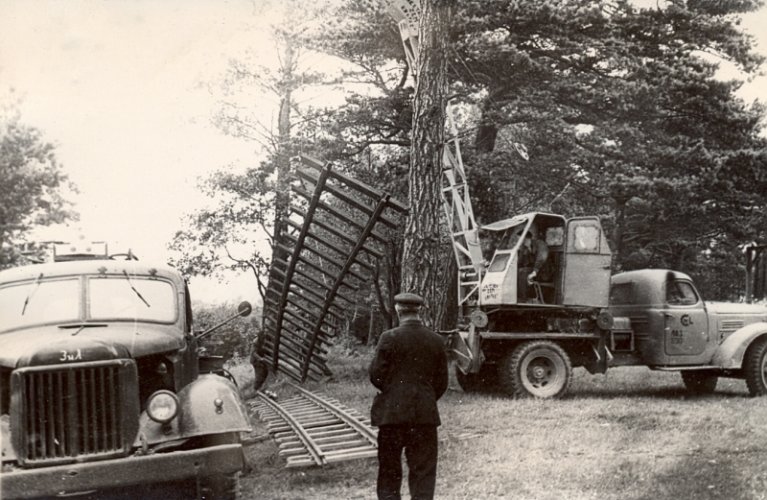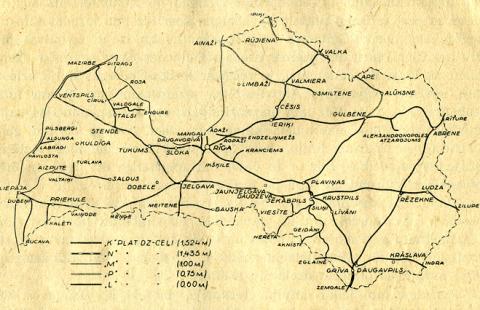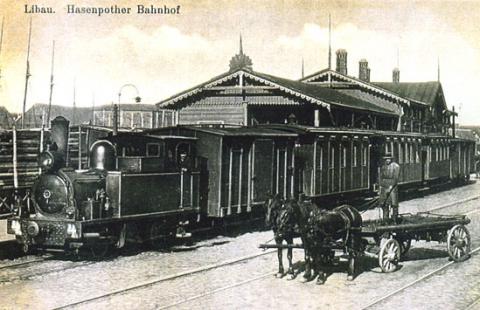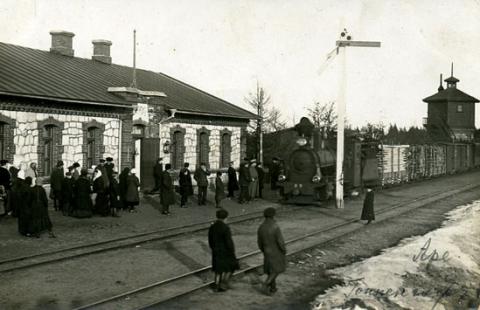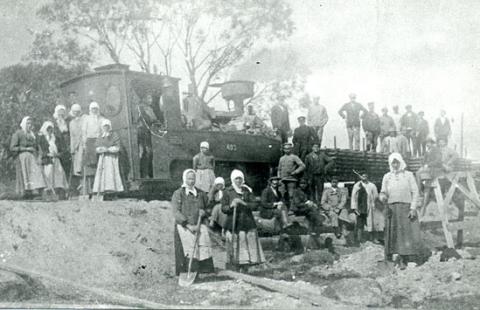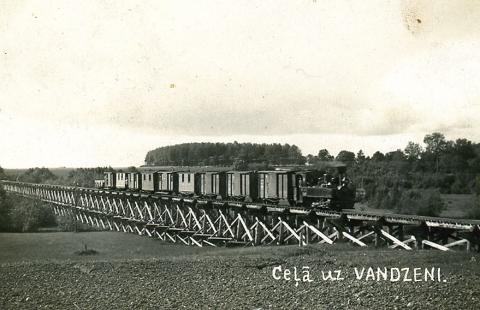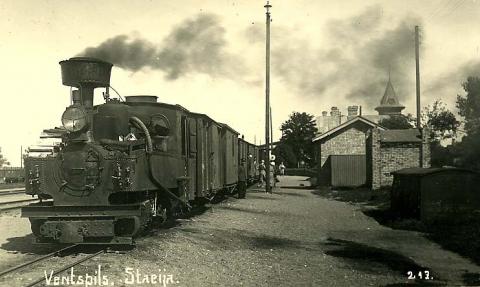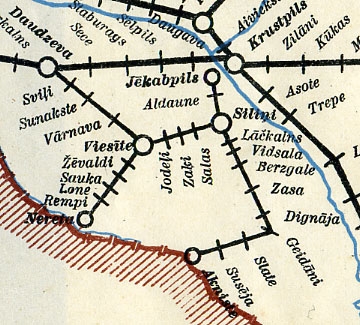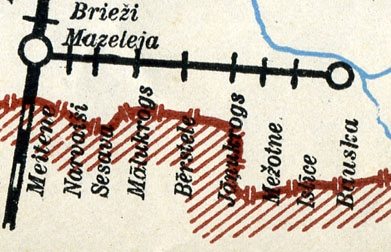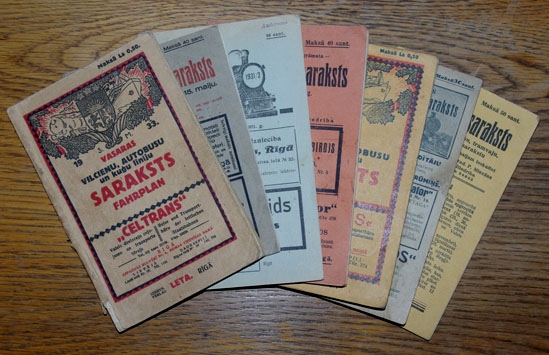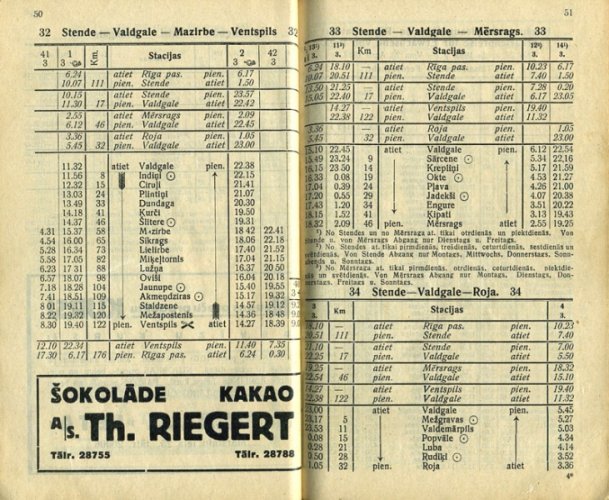History of Railway in the Museum
The beginnings of narrow gauge railroad exposition in Seaside Open Air museum leads back to 1963. The width of our narrow gauge railroad is 600mm. This railroad was built by museum employees, former railway workers and volunteers.
Enlargement of narrow gauge railroad expozition in 2010
The idea of second exposition enlargement came in 2004. The plan was to buy some extra elements for the exposition that would first of all allow visitors to experience the feeling of narrow gauge railrod “golden age” in Latvia (which was 1920’s-1930’s), as well as extending railroad line so that it would merge in to the city’s transport system.
In 2007 German specialists who would check the technical condition of museum’s steam locomatives Ml-631 and Ml-611 were invited to Ventspils. In 2007 and 2008 was set and accepted a major documentation of museum’s narrow gauge railroad exposition enlargement.
In 2009 between State Regional Development Agency and Museum of Ventspils was made an agreement of implementation of the project “The Baltic’s only historically retained 600mm narrow gauge railroad development as an cultural and historical heritage; it’s implementing in Ventspil’s transport structure and international tourism business” with the support of EU fund finances.
In October 2009 the biggest project in museum exhibit narrow gauge railroad in Baltic states started in Ventspils Seaside Open Air museum. The project was finished in August 4th 2010. As part of the project were built and put in to operation:
- new 2 km long railroad and technical line;
- copy of station that was originally placed in Mazirbe;
- copy of train depot that’s originally placed in Aizpute;
- wagon shed;
- two passenger sheds in stops “Pludmale” and “Priedes”;
- two rail crossings with lights and sound signals on Vasarnīcu and Aizsaules streets;
- copy of Pļavas station at the end of the railroad line;
- locomative swivel at the end of the railroad line.
History of latvian narrow gauge railways
In Latvia, narrow gauge railways are fondly named “bānītis” or “mazbānītis” (little train), in vulgar tongue. The designation “bānītis” or “mazbānītis” are derived from german word “Bahn”. Railways are classified by railwaymen as narrow-gauge railways, gauge thereof being less than 1,435mm, or the so called standard gauge. Gauge corresponds to the distance between inside edges of rails. Most of people are unaware that some day there were two “large” railways of different gauges in Latvia – the broad-gauge of 1,524mm and the standard gauge of 1,435mm, as well as narrow-gauge railways of three different gauges, i.e., 1,000mm, 750mm and 600mm. While all Latvian narrow-gauge railways are united under the designation of “bānītis” or “mazbānītis”, history of origin and the technical equipment thereof are totally different.
The first narrow-gauge railway line Liepāja-Aizpute (1900) in Kurzeme was constructed at 1,000mm gauge, typical of German narrow-gauge railways while the first narrow-gauge railway lines in Vidzeme: Valka-Pērnava (1887), Pļaviņas-Valka (1903) and Ainaži-Valmiera-Smiltene (1912), were constructed at 750mm gauge, typical of tsarist Russia narrow-gauge railways then. All of these narrow-gauge railway lines were constructed by private companies. Upon launch of construction of these railways, extensive calculations were conducted and detailed designs were elaborated appropriate to peace-time. Every private company, according to their economic estimates, planned freights and peculiarities of the line, ordered the most appropriate engines and coaches in different factories. In turn, railways of 600mm gauge were constructed during the World War I for military purposes – transportation of military freights. These narrow-gauge railways of strategic importance were built in full career without special design works, and they featured importance of temporary railways. Any railway stock was standardized.
To facilitate supervising of different gauge railways and avoid misunderstandings, each gauge of narrow-gauge and broad-gauge railways were given their own designations by Latvian National Railways in 1919:
Broad-gauge railways:
- 1524 mm – “K”, Russian gauge (broad gauge)
- 1435 mm – “N”, standard gauge
Narrow-gauge railways:
- 1000 mm – “M”, one
Liepāja-Aizpute narrow-gauge railway line was the only railway line of 1,000 m gauge for general use. Closed in 1964.
750 mm – “P”, supply gauge.
Railway lines: Pļaviņas-Valka-Ipiķi, Ainaži-Valmiera-Smiltene, Sita-Rēzekne I, Liepāja-Kuldīga, Liepāja-Rucava (transformed from 600mm to 750mm in 1932), Liepāja-Aizpute (transformed from 1,000mm to 750mm in 1939). All the railway lines of 750mm gauge are dismantled with the exception of the preserved section Gulbene-Alūksne of the former Pļaviņas-Valka-Ipiķi line.
600 mm – “L”, field gauge.
Ventspils/Stende field railways, Jēkabpils/Viesīte field railways, railway lines: Liepāja-Rucava, Aizpute-Saldus, Pāvilosta-Alšvanga, Meitene-Bauska and forest railways – Inčukalns-Allaži and Ogre-Laubere. All the railway lines of 600mm gauge are dismantled in Latvia.
Read more on railways of 600mm gauge in further subsections.
World War One 1915-1918
Widespread construction of 600mm gauge railway is attributed to the outbreak of the World War I when the German army set to construction of several the so called military railways (in German – Heeresfeldbahn) on the occupied territory of Latvia in 1916. Due to the bad condition of unpaved roads of that time, sectional railway was the most appropriate battle-field transport ensuring supply to the front. Special teams specializing in construction and usage of the military railways were formed up within the German army. Stock of the military railway – rails, coaches and engines – designed specially for purposes of the army, were standardized thus making usage of these railways simple. Assembled, straight and bent rail sections 5 meters long on 10 iron sleepers were delivered to the front thus enabling construction of several kilometers of the military railway line per day if the weather permitted. The railways could be both constructed quickly and dismantled fast to transfer thereof to some other front line. Armies of Austria, the USA, France and Great Britain also had similar military railway teams and standardized military railway stock.
As the military railways were subject to temporary use, construction of these railways was carried out in full career non-complying with several railway construction standards. In order to hasten construction of the railway while at the lowest possible cost, it was adjusted to surrounding topography maximally hence military railways were very winding, with steep gradients or sharp rises to avoid hilly areas thus being partially the reason for the trains running off the rails. In many places, railway tracks were laid along a side of the existing unpaved roads therefore the passing trains startled horses occasionally, as a result carts ran off the road right into ditch. In deeper and longer valleys, to avoid labour-intensive earthwork, wooden scaffold bridges were built up to 1 km long and 15 m high, instead of embankments, although they were quite insecure for intensive use. Irrespective of any imperfections, these military railways performed their function in ensuring supply to the front and other transportation tasks. In construction of these railways hostages were engaged as well as local people, women in general, as men were called up for war.
Operation 1918-1972
After the World War I, all railways on the territory of Latvia became in charge of the newly established Latvian State Railways.
A great part of the railways constructed during the war were appropriate for transportation of passengers and freight: embankments were secured, the bridges were reconstructed, as well as new station buildings and luggage sheds were built. The Latvian State Railways designated the narrow-gauge railways of 600mm gauge – “field” gauge railways. Despite the low speed of 20 km/h of the train, it had been almost for 60 years the only secure means of transport for traffic of passengers, various farm produce and forest materials to cities during winter and summer. Special ice wagons were furnished for transportation of dairy and meat products.
In the mid-1930s, it was decided to transform the railways of 600mm gauge constructed during the war into 750mm gauge. By the World War II, the railway line Liepāja-Rucava was the only one to have been managed. The rest lines remained at 600mm gauge until dismantling thereof.
The narrow-gauge railway became a reliable means of transport in many areas contributing to rapid economic growth of the area. It not only employed a large part of local people but also attracted new hands from the entire Latvia. Thanks to the railway, new companies were established in the areas and even new cities developed.
The narrow-gauge railways of Latvia had been functioning without interruption also during the World War II. Along with ever more rapid development of motor transport, the narrow-gauge railways started losing their importance. In 1961, traffic of passenger trains was terminated on all “field” gauge lines that further served for transportation of goods and wood only. In following years, length of the usable lines started shrinking gradually. The last Latvian railway line of 600 mm gauge Viesīte-Daudzeva was closed in August, 1972.





